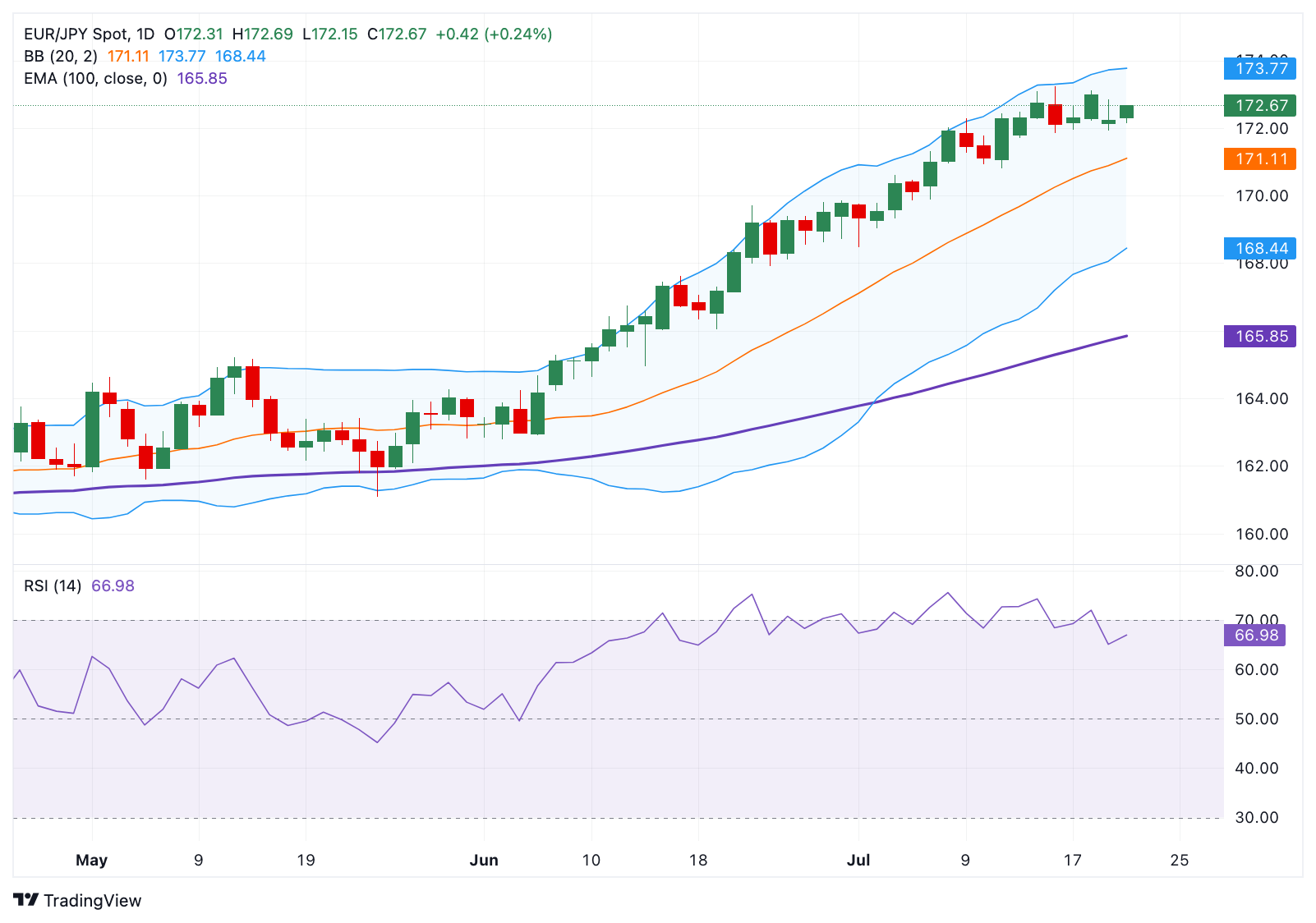EUR/JPY Price Forecast: Constructive outlook in place above 172.50
- EUR/JPY trades in positive territory near 172.60 in Tuesday’s early European session.
- The bullish outlook of the cross remains intact above the key 100-day EMA, with the bullish RSI indicator.
- The immediate resistance level emerges at 173.11; the first support level to watch is in the 172.00-171.90 region.
The EUR/JPY cross gains traction to around 172.60 during the early European session on Tuesday. Japanese Prime Minister Shigeru Ishiba on Monday vowed to remain in office, despite exit polls showing that his ruling Liberal Democratic Party (LDP) is certain to lose control of the upper house in Sunday's election. Political uncertainty and rising concerns over the direction of future fiscal policy in Japan weigh on the Japanese Yen (JPY) against the Euro (EUR).
Technically, the constructive outlook of EUR/JPY remains in place as the cross is well-supported above the key 100-day Exponential Moving Average (EMA) on the daily chart. The upward momentum is reinforced by the Relative Strength Index (RSI), which stands above the midline near 66.65, suggesting that further upside looks favorable.
On the bright side, the first upside barrier for the cross emerges at 173.11, the high of July 18. A decisive break above this level could pick up more momentum and aim for the crucial resistance level at 173.75, the upper boundary of the Bollinger Band and psychological level. Further north, the additional upside filter to watch is 174.52, the high of July 3, 2024.
In the bearish case, the initial support level for the EUR/JPY is seen in the 172.00-171.90 zone, the psychological mark and the low of July 21. A breach of this level could drag the cross toward 170.81, the low of July 11. The next contention level is located at 170.00, a round figure.
EUR/JPY daily chart

Japanese Yen FAQs
The Japanese Yen (JPY) is one of the world’s most traded currencies. Its value is broadly determined by the performance of the Japanese economy, but more specifically by the Bank of Japan’s policy, the differential between Japanese and US bond yields, or risk sentiment among traders, among other factors.
One of the Bank of Japan’s mandates is currency control, so its moves are key for the Yen. The BoJ has directly intervened in currency markets sometimes, generally to lower the value of the Yen, although it refrains from doing it often due to political concerns of its main trading partners. The BoJ ultra-loose monetary policy between 2013 and 2024 caused the Yen to depreciate against its main currency peers due to an increasing policy divergence between the Bank of Japan and other main central banks. More recently, the gradually unwinding of this ultra-loose policy has given some support to the Yen.
Over the last decade, the BoJ’s stance of sticking to ultra-loose monetary policy has led to a widening policy divergence with other central banks, particularly with the US Federal Reserve. This supported a widening of the differential between the 10-year US and Japanese bonds, which favored the US Dollar against the Japanese Yen. The BoJ decision in 2024 to gradually abandon the ultra-loose policy, coupled with interest-rate cuts in other major central banks, is narrowing this differential.
The Japanese Yen is often seen as a safe-haven investment. This means that in times of market stress, investors are more likely to put their money in the Japanese currency due to its supposed reliability and stability. Turbulent times are likely to strengthen the Yen’s value against other currencies seen as more risky to invest in.

